It's been nearly a decade since Triumph stripped the fairing off its Daytona 675 and created a model that's gone on to massively outsell the supersport machine it's based on: The Street Triple. While it's been revised a couple of times, the 2016 model still shared most of its parts with the original, launched in late 2007, but that's all changing with the reveal of the 2017 version. There are now three models on offer, all with a 765cc update of the previous 675cc engine. As well as a basic version – now dubbed the Street Triple S – and a higher-spec R model, there's a new range-topper called the Street Triple RS.
Where the previous bike boasted 106bhp from its 675cc engine, the new S version cranks out 111bhp, the R manages 116bhp and the new RS manages 121bhp. The extra capacity and performance comes courtesy of a new crankshaft and increased bore and stroke, fitted to all versions of the bike. In European markets there’s also a smaller 660cc version that’s able to be restricted to just 47bhp and meet ‘A2’ licensing laws for new riders. In line with new European rules, all the versions have ABS brakes meet Euro4 emissions limits, which came into force on January 1st this year. Partly as a response to the changes needed to reduce emissions, all versions of the bike get ride-by-wire throttles. They also feature traction control and multiple riding modes.
The chassis is largely familiar, but there’s a new swingarm and stylistically the bikes get new side panels, exhausts, tail units and headlights. However, there are significant changes from one model to the next. The basic Street Triple S features new clocks that retain the old combination of an analog rpm gauge, counter and digital speed readout. It uses Showa suspension at both ends and Nissin two-pot, sliding caliper front brakes. Riding modes are limited to ‘rain’ and ‘road’ options.
Step up to the ‘R’ version and things get a little more interesting. The instruments are replaced with a new colour TFT display that offers every imaginable piece of information. The suspension is again from Showa, but the forks are the higher-spec Big Piston Front version and the shock is fully adjustable. Braking on the R is done by Brembo four-piston Monobloc calipers and the electronics quotient is upped to include four riding modes, adding ‘sport’ and a rider-programmable option on top of the ‘road’ and ‘rain’ settings. The range-topping Street Triple RS offers even more. There’s a belly pan to mark it out visually, plus bar-end mirrors. As well as its extra peak power, the 765cc triple in the RS gets shorter gear ratios to boost acceleration and a quickshifter to help you make your way through them.
Its front suspension is improved again, to Showa Big Piston forks, while the rear shock is even better and comes from Ohlins. The brakes are Brembo’s M50 radial Monobloc calipers. Both the engine and the ABS brakes gain an additional ‘track’ mode over and above the options already offered on the ‘R’ model. Whichever version you choose, weight is pegged at 366lbs. Prices should be close to those for the existing bike for the S and R versions, while the RS will understandably cost more when it reaches dealers in March. The S follows in April and you’ll have to wait until May for the R model.
/cloudfront-us-east-1.images.arcpublishing.com/octane/YKTDHLXG3XEX44HC6C4ZHNMVUU.jpg)

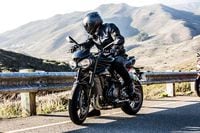
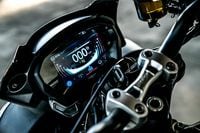
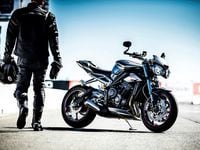
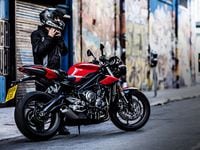
/cloudfront-us-east-1.images.arcpublishing.com/octane/D2BDYKKNZ5GRHGDMI4PZTGRMME.jpg)
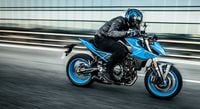
/cloudfront-us-east-1.images.arcpublishing.com/octane/UAY4WSZPOFDQRP4MCEXAKDFQOQ.jpg)
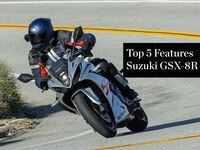
/cloudfront-us-east-1.images.arcpublishing.com/octane/X5CE3KSJHZHM5CUFGPZ7U26WB4.jpg)
/cloudfront-us-east-1.images.arcpublishing.com/octane/COWLTPGFAFGDDGJCTENYMA4VJM.jpg)
/cloudfront-us-east-1.images.arcpublishing.com/octane/H3PKUGPSUJFTND4RFPSI4OIDCE.jpg)
/cloudfront-us-east-1.images.arcpublishing.com/octane/UHGQA3MQDFCA3HLBWF7S76WH6Y.jpg)
/cloudfront-us-east-1.images.arcpublishing.com/octane/Q5EORCSTNFAVBJC4IYUHIKJTXQ.jpg)
/cloudfront-us-east-1.images.arcpublishing.com/octane/XIJ5FUFSP5A3NL7MOVZGJXAHC4.jpg)
/cloudfront-us-east-1.images.arcpublishing.com/octane/V5NZN3CGS5B5PPYFYJHIPAU5S4.jpg)
/cloudfront-us-east-1.images.arcpublishing.com/octane/CZE6ONOBU5E7HPIEEADU376C4M.jpg)
/cloudfront-us-east-1.images.arcpublishing.com/octane/UT4KL3SIYJBSPNHWJXTBE6MTGE.jpg)
/cloudfront-us-east-1.images.arcpublishing.com/octane/Q3UOIDZ22ZEVDBZUWGJXIMGJKI.jpg)
/cloudfront-us-east-1.images.arcpublishing.com/octane/YQM66WXZV5AAXNNOIUVOGVXZMY.jpg)
/cloudfront-us-east-1.images.arcpublishing.com/octane/J47NFTXNLFFGHELHZCUD2LCITA.jpg)
/cloudfront-us-east-1.images.arcpublishing.com/octane/NXPQBTLX3NCILKQ2GCFJYNIDEM.jpg)
/cloudfront-us-east-1.images.arcpublishing.com/octane/6U7NJLAYMRBZTIGNKWIA5OK2FQ.jpg)
/cloudfront-us-east-1.images.arcpublishing.com/octane/IYTZQWUROVC25IMTDEWUDQ5IQE.jpg)
/cloudfront-us-east-1.images.arcpublishing.com/octane/YJODDXEL2ZB5TENKPPN4BEYJAE.jpg)
/cloudfront-us-east-1.images.arcpublishing.com/octane/QEQQUZYNJFAIJB4DZFVFSNTCQ4.jpg)
/cloudfront-us-east-1.images.arcpublishing.com/octane/F4EEHDT3UZFKPLKVGDWMMPFEQE.jpg)
/cloudfront-us-east-1.images.arcpublishing.com/octane/J47U6OWNLBFBBG75A3ILAKFYZU.jpg)
/cloudfront-us-east-1.images.arcpublishing.com/octane/XWWQYTL3J5B7LKXDI354FFF4NQ.jpg)